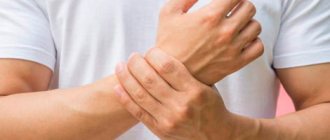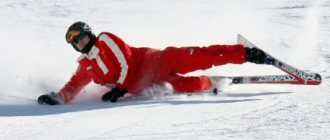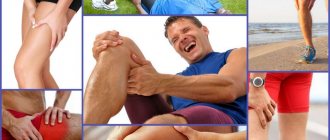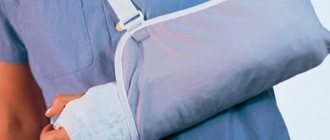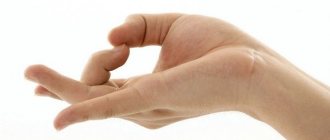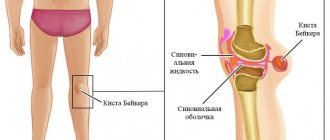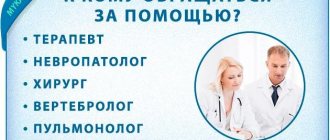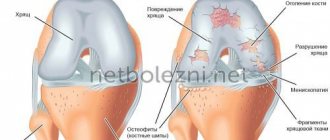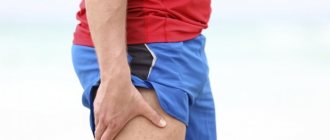You feel it when you walk, you definitely feel it when you lean forward, and the thought of running faster than the pace of a retired beginner seems impossible.
Biceps femoris pain is a big problem, especially for runners, as these muscles are one of the most heavily worked muscles when running.
They bend your knee and help extend your torso at the hip joint, meaning they actively work at multiple points in the gait cycle.
No matter what kind of pain it is - sharp, aching, pulling, stiffening or even spreading up the back, pain in the upper part of the leg - where the biceps femoris muscle attaches to the pelvis - can make your life a complete misery.
And you are ready to do anything to get rid of this pain, even if it means spending thousands of dollars on treatment with unpredictable results.
Although the most common injury to the biceps femoris muscle is an acute or chronic strain, it is also susceptible to the development of tendonitis. In this case, the injury is called superior (proximal) biceps tendinopathy.
This injury is rare, difficult to treat, and can become a long-term or even chronic problem for you.
There has been limited coverage of this injury in the scientific and medical literature, so there is no reliable data on how common it is among runners.
Therefore, today we will tell you what biceps tendonitis is; how to know if you have this injury; We will offer several treatment options (from conservative to aggressive); We’ll also give you recommendations to help you get back to running as quickly as possible.
You are ready? Then let's get started!
What is biceps tendinopathy?
The biceps femoris muscle originates at the top of your tibia, just behind your knee, runs up the back of your thigh and attaches to your pelvis.
While one bundle of muscle attaches to the femur, the other extends under the gluteal muscle and attaches to the pelvis at a bony protrusion called the ischial tuberosity.
These double arched bones are sometimes called the ischiums because they support most of your weight when you sit, especially on a hard surface.
The junction between the biceps femoris tendon and the ischial tuberosity is an area susceptible to tendinopathy.
This tendinopathy is felt as a vague, aching pain at the top of the biceps femoris muscle and deep in the gluteal muscle.
Pain appears during running, especially when accelerating and maintaining a fast pace.
Sometimes the sciatic nerve, which runs very close to the ischial tuberosity, can also become irritated, causing pain to radiate down the back of the thigh.
In addition to pain while running, you may feel irritation in your ischial tuberosity when sitting on a hard surface. Pressing directly on the ischial tuberosity can also be painful.
How do you know if you have biceps tendonitis?
A review study published in January 2012 suggested 3 physical tests to screen for superior biceps tendinopathy.
The first is a simple standing hamstring stretch in which you place your foot on a knee-to-waist support and reach your toes with your hands.
The second is stretching the hamstrings while lying on your back. You lift your leg bent at the knee, and an assistant slowly straightens it to stretch the biceps femoris muscle.
You can repeat this test without an assistant, using a rope or belt, as shown in the photo below.
The third test is similar to the second, but this time the leg at the knee joint is straightened quickly by an assistant. Pain in the upper hamstring or buttock during any of these 3 tests is a sign of superior biceps tendinopathy.
Although these tests are quite accurate and correctly identify the injury 76-89% of the time, none of them are perfect, highlighting the usefulness of high-tech imaging in diagnosing the injury as accurately as possible.
MRI can be very helpful in evaluating biceps tendinopathy. An MRI may reveal thickening, tearing, or inflammation of the tendon and swelling in the bone in the area of the ischial tuberosity. Ultrasound can also be used for diagnosis, but unlike MRI, it cannot visualize bone marrow swelling.
Causes of nagging pain in the hips
There are other potential causes of nagging pain in the hips; they largely differ according to the patient’s age and gender. In women, very often such unpleasant sensations at a young age are associated with deformation of the axial skeleton during pregnancy, and in old age with destruction of the hip joint. In men, nagging pain in the hip area at a young age is almost always associated with the development of ankylosing spondylitis, and in old age it is a sign of destruction of the knee joints.
Other causes of nagging pain in the hips may include the following conditions:
- a febrile period of increasing hyperthermic reaction during colds, viral and bacterial infections;
- migration of larvae of some intestinal parasites;
- anemia in iron deficiency and hemolytic form;
- muscle fiber dystrophy after a long period of forced immobility of the patient;
- consequences of acute or transient cerebrovascular accident with paralysis of the lower extremities;
- poliomyelitis, osteomyelitis, tick-borne encephalitis and some other dangerous infections that affect the arachnoid membranes of the brain and spinal cord;
- back injuries;
- cicatricial changes in the tendon and ligamentous apparatus of the lower extremities;
- convulsive syndrome;
- restless legs syndrome;
- deficiency in the diet of some important microelements, such as potassium, magnesium, calcium;
- fibromyalgia.
It is necessary to clarify the causes of nagging pain before starting treatment. At its core, nagging pain in the thigh, groin or buttock area is just a symptom of another disease. This is not an independent pathology, but a way of its manifestation. Therefore, treatment should always be aimed at eliminating the underlying disease. Treating the pain itself is useless and dangerous. By masking discomfort with non-steroidal anti-inflammatory drugs, you risk bringing your musculoskeletal system to such a stage of destruction that only surgery can help.
How to treat pain in the biceps femoris muscle?
In one of the few articles on superior biceps tendinopathy, Michael Frederickson, William Moore, Mark Gillett, and Christopher Beaulieu from Stanford University provided a very insightful treatment plan that they found useful for treating this injury in runners.
Once the diagnosis is confirmed by physical examination and MRI, the patient's core strength, hamstring stretch, and pelvic stability are assessed.
Frederickson et al recommend correcting pelvic tilt (presumably through manual or chiropractic manipulation, although the article does not specify how) if present, as it can increase the tensile load on the hamstrings.
The scientists also endorsed deep soft tissue massage to break up scar tissue along the proximal biceps femoris tendon, although they cautioned to avoid pressing directly on the ischial tuberosity.
Other case studies have also supported the usefulness of deep soft tissue manipulation, including techniques such as the Active Release Technique and the Graston Technique, for the treatment of superior biceps tendinopathy.
Gently stretching your hamstrings several times a day can also help.
Treatment of nagging pain in the hip area
Any nagging pain in the hip area is a distress signal from the nervous tissue. Therefore, medical assistance should be provided as quickly as possible. Preventing the death of nerve tissue is a primary task. Therefore, in our manual therapy clinic, any treatment for nagging pain in the hip begins with an emergency search for the cause and its elimination. So, if the sciatic nerve is pinched against the background of protrusion of the intervertebral disc in the lumbosacral spine, then the attack can be stopped with the help of 1-2 sessions of traction traction. And if the reason lies in the destruction of the hip joint, then osteopathy and manual therapy will come to the rescue.
Subsequently, after the pain attack is stopped, restorative comprehensive treatment of the patient begins. It is developed individually, depending on what disease caused the nagging pain in the hip. We usually use massage and osteopathy, reflexology and kinesiotherapy, laser treatments and therapeutic exercises.
Schedule a free initial consultation at our manual therapy clinic. After the examination and diagnosis, the doctor will tell you how the treatment will be carried out and what prospects there are for a full recovery.
How to strengthen the biceps femoris muscles?
The core of Frederickson's rehabilitation program is eccentric exercises to strengthen the biceps femoris muscles.
Like the patellar tendon and Achilles tendon, the biceps femoris tendon is thick, fibrous, and has a poor blood supply, making it difficult to heal.
Additionally, like the more common patellar and Achilles tendon injuries, superior biceps tendonitis appears to be a degenerative process rather than an inflammatory process.
This means that the tendon fibers become frayed, damaged, and misdirected.
However, since we know that Achilles and patellar tendonitis can be effectively treated with eccentric exercises, it is logical to assume that the rehabilitation program for superior biceps tendinopathy should also be based on eccentric exercises.
A strength rehabilitation program begins with simple isometric exercises for the hamstrings and buttocks, such as the glute bridge.
Once the pain goes away, Frederickson recommends moving on to eccentric exercises.
The hamstring catch exercise can serve as a good introductory eccentric movement. In addition, Frederickson considers supine leg curls with feet on an exercise ball to be an ideal exercise for developing both eccentric and concentric hamstring strength.
At first, leg curls with a fitball can be performed in a short range of motion, then, as the muscles strengthen, in a full range of motion and, ultimately, with each leg separately.
Frederickson also emphasizes the importance of core strengthening during a biceps femoris injury rehabilitation program, citing another study that found core strengthening reduced the risk of recurrent hamstring strains.
It is possible that strong abdominal and buttock muscles help stabilize the pelvis by taking pressure off the biceps femoris.
Frederickson's program focuses on the use of the plank exercise, particularly the leg-raised variation, which helps activate the glutes and biceps femoris together, a key component of recovery.
Why does nagging pain occur in the leg from the hip to the knee?
Any nagging pain in the leg from the hip is a symptom of trouble. Pathological changes may affect the following structures:
- spinal column (osteochondrosis, protrusion, intervertebral hernia;
- intervertebral uncovertebral joints and instability of the position of the vertebral bodies;
- blood vessels located in the pelvic cavity and in the soft tissues of the thigh (obliterating endarteritis, atherosclerosis, varicose veins of the lower extremities, etc.);
- stagnation of lymphatic fluid and secondary inflammation of the lymph nodes (lymphadenopathy often accompanies inflammatory processes);
- pinching and inflammation of the nerve fiber due to osteochondrosis, back injury, tunnel syndromes;
- damage to the location of the sciatic nerve in the popliteal fossa (in this case, the pain is of the nature of an ascending pathology);
- diabetes mellitus and its complications, such as diabetic angiopathy and neuropathy;
- tumor processes in the pelvic cavity.
It is impossible to diagnose nagging pain in the thigh to the knee on your own, since most of the sensations are subjective. Only an experienced doctor, when conducting a full examination of the patient using differential diagnosis, will be able to establish a preliminary diagnosis. The cause of nagging pain in the thigh, groin and buttock can only be clarified through a laboratory examination. Patients are prescribed X-rays, CT, MRI, ultrasound of soft tissues and many other types of examinations.
Is there anything else that can be done to speed up healing from tendinitis?
Other options discussed in the article by Frederickson et al include corticosteroid injections and extracorporeal shock wave therapy.
Both of these procedures can weaken the tendon, so they are auxiliary and not primary.
Steroid injections
Corticosteroid injections have been well studied, and since injections directly into the tendon can be quite harmful, Frederickson suggests using ultrasound to guide the injection needle exactly where it should be. In this case, the anti-inflammatory agent can be delivered to the affected tissue surrounding the tendon without penetrating or damaging the tendon itself.
The researchers also found that patients whose MRI revealed more swelling around the ischial tuberosity and less tendon thickening received greater relief from the cortisone injection than patients with more severe tendon thickening.
Extracorporeal shock wave therapy
Shockwave therapy is mentioned briefly in the article because it has been found to be effective for other types of chronic tendon injuries in athletes. Frederickson et al caution that they have little experience using ESWT for superior biceps tendinopathy, and animal studies have shown that the procedure results in decreased tendon strength (at least in the short term).
Surgical intervention
In a small number of cases, surgery is necessary to relieve stress on the sciatic nerve and separate the damaged tendon fibers near the ischial tuberosity.
The good news is that, according to a 2009 study by Lasse Lempainen and colleagues from Finland, a high percentage of athletes ultimately achieve the same level of performance after surgical treatment of superior biceps tendinopathy.
80 of the 90 patients in Lempainen's study returned to the same level of exercise, with 62 of them "showing excellent results."
While this is encouraging, the average recovery time of 5 months (generally anywhere from 2 to 12 months) is a sobering fact and serves as a reminder that few surgeries for running injuries are actually “minor.”
Nagging pain in the thigh of the left and right leg
It is not uncommon for a patient to complain of nagging pain in the left or right thigh; the simultaneous presence of this symptom on both limbs is extremely rare. Typically, nagging pain in the right or left thigh is a symptom of nerve fiber damage. This is always compression (squeezing). Here's what can cause increased pressure on nerve tissue:
- inflammation (for example, with arthritis or arthrosis);
- stagnation of lymph and venous blood;
- trauma (for example, sprain of the ligamentous apparatus of the knee or hip joint and accumulation of blood in the form of an internal hematoma);
- proliferation of bone tissue in the joint cavities (deforming osteoarthritis);
- mechanical exogenous pressure (wearing tight clothes, the habit of crossing your legs when sitting, etc.).
If a nagging pain appears in the thigh of the left leg (or right), be sure to examine the limb for changes in the color of the skin or the presence of traumatic injuries. Then carefully feel all the tissues and joints. This can give you an initial idea of what caused the discomfort.
If you experience sharp, nagging pain in the thigh of your right or left leg, we advise you to urgently seek medical help. If this is compression of the sciatic or any other nerve, then with a late start of treatment, partial loss of function of the lower limb is possible. It will be very difficult to subsequently restore the innervation of the leg tissues.
Why is biceps tendonitis difficult to treat?
Superior biceps tendinopathy is a stubborn and difficult to treat injury.
Additionally, due to its relative rarity (especially outside of athletics) and the paucity of review studies on potential treatments, scientifically supported treatment protocols remain lacking.
However, since this is a known problem of tendon degeneration, the same treatment strategies that work for Achilles and patellar tendon injuries should also be effective for superior biceps tendinopathy.
According to Frederickson, a progressive strength program that focuses on strengthening the core and glutes and promoting healing of the proximal biceps tendon (through eccentric exercises) should be the foundation of any rehabilitation program.
Due to the similarity of some of the symptoms of this injury to other injuries localized to the pelvic area, proper diagnosis is important and requires a physical examination and MRI.
Additionally, due to the individual nature of this injury, it is recommended that you find a good podiatrist and physical therapist to monitor your rehabilitation process and receive advice on returning to running.
Symptoms of inflammation
A characteristic sign of inflammation under the knee is nagging pain that appears after exercise, walking, or running. Swelling of the tissues and an audible crunching sound when moving are also possible.
Anserine tendinitis (inflammation of the crow's foot) is characterized by pain with:
- climbing stairs;
- lying on the side on the affected side;
- placing one knee on top of the other.
During the examination by the doctor, the patient clearly points to the painful point. When palpated, severe pain and, somewhat less frequently, swelling of a certain area is detected.
As the pathology progresses, the function of the joint is impaired, knee flexion and rotational movements become difficult. Due to the close plexus of tendons in the crow's foot, the inflammatory process quickly moves from one element to another, worsening the course of the disease.
When the affected area becomes infected, purulent tendonitis develops, which is accompanied by an increase in pain, swelling of the knee, and an increase in temperature. This condition requires immediate hospitalization.
Who should you consult?
If you have been trying to treat your injury for a long period of time and still do not notice relief, then you should seek expert help.
See a physical therapist or chiropractor for manual therapy or massage (including Active Release Technique or Graston Technique) to break up scar tissue and adhesions in the superior biceps femoris tendon.
Make sure that the manipulations are performed on the muscle and tendon tissue and do not affect the ischial tuberosity (do not further irritate this area). Many runners also find sitting on a tennis ball or a hard surface (if sitting for long periods of time) helpful, as they are able to stand up without pain.
Consult with your podiatrist to see if you need a corticosteroid injection (preferably ultrasound-guided).
According to Frederickson, this may be especially helpful in cases where the MRI shows significant swelling near the ischial tuberosity.
Talk to your doctor about the risks and benefits of extracorporeal shock wave therapy.
Although this procedure has not been proven to be effective for superior biceps tendinopathy, it has been used with some success for chronic tendon problems in other parts of the body.
